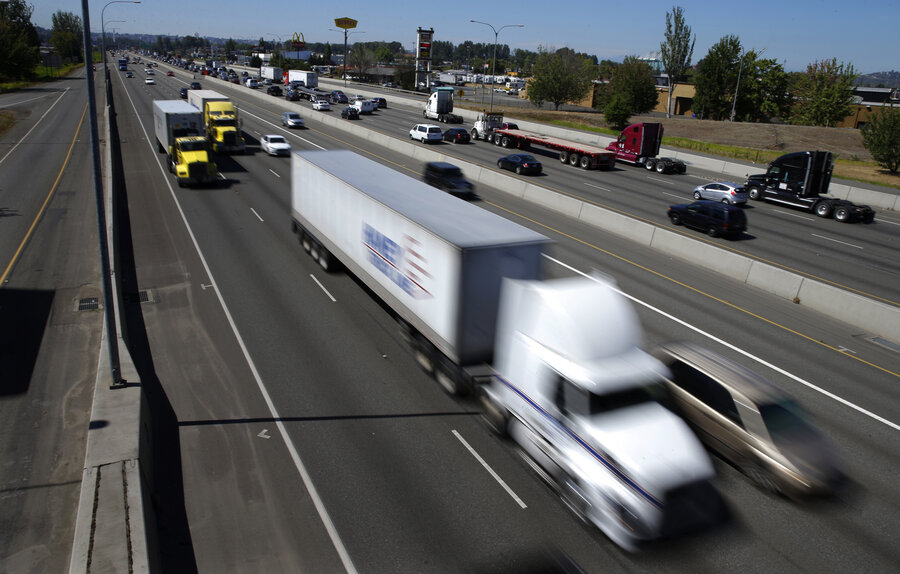Should trucks and buses have their own speed limits?
Loading...
Federal agencies hope to cap speed limits for large trucks and buses on US highways, the US Department of Transportation announced Friday.
The National Highway Traffic Safety Administration (NHTSA) and Federal Motor Carrier Safety Administration (FMCSA) suggest a national proposal that would require all newly manufactured US cars, buses, and trucks weighing more than 26,000 pounds to come with a speed-limiting device.
The public can provide input on the speed limits, but the agencies are currently suggesting limits of 60, 65, and 68 miles per hour. In some states, speed limits are as high as 85 miles per hour.
“There are significant safety benefits to this proposed rulemaking,” US Transportation Secretary Anthony Foxx said in a press release. “In addition to saving lives, the projected fuel and emissions savings make this proposal a win for safety, energy conservation, and our environment.”
The US Department of Transportation suggests that such restrictions could save $1.1 billion in fuel costs and millions of gallons of fuel each year.
“This is basic physics,” adds NHTSA Administrator Mark Rosekind. “Even small increases in speed have large effects on the force of impact. Setting the speed limit on heavy vehicles makes sense for safety and the environment.”
The American Trucking Association (ATA), the largest national trade association for the trucking industry, says the proposal has been a long time coming.
“We are pleased NHTSA and FMCSA have, almost 10 years after we first petitioned them, released this proposal to mandate the electronic limiting of commercial vehicle speeds,” Chris Spear, the president of the ATA, tells The Hill. “Speed is a major contributor to truck accidents and by reducing speeds, we believe we can contribute to a reduction in accidents and fatalities on our highways.”
It’s true – several studies have proven a direct correlation between vehicle speed and crash fatality. Regulators say such a speed cap could reduce the 1,115 fatal truck crashes each year.
And according to a report by the Associated Press, which was released last year, trucks in 14 states now drive faster than their tires can handle. Tractor-trailers’ tires are designed for maximum speeds of 75 miles per hour, but now several states have speed limits of 75, 80, or 85 on some highways.
However, Great Britain reversed the same speed restrictions on trucks that the US now hopes to implement.
Up until 2014, trucks were restricted to 40 miles per hour on two-lane highways – far slower than all other cars’ limit of 60 miles per hour.
But Great Britain chose to up trucks’ speed limit to 50 miles per hour in early 2015, after realizing several crashes were the result of faster passenger cars attempting to pass the slower trucks. And while officials did not cite financial reasons for the change, the speed hike will save the trucking industry a lot of time, which means it will save a lot of money (potentially $18.7 million).
The Owner-Operator Independent Drivers Association (OOIDA) agrees with Great Britain: mandating slower speeds for trucks is not a good idea.
“Highways are safest when all vehicles travel at the same relative speed,” OOIDA Vice President Todd Spencer said in a statement. “This wisdom has always been true and has not ever changed.”






